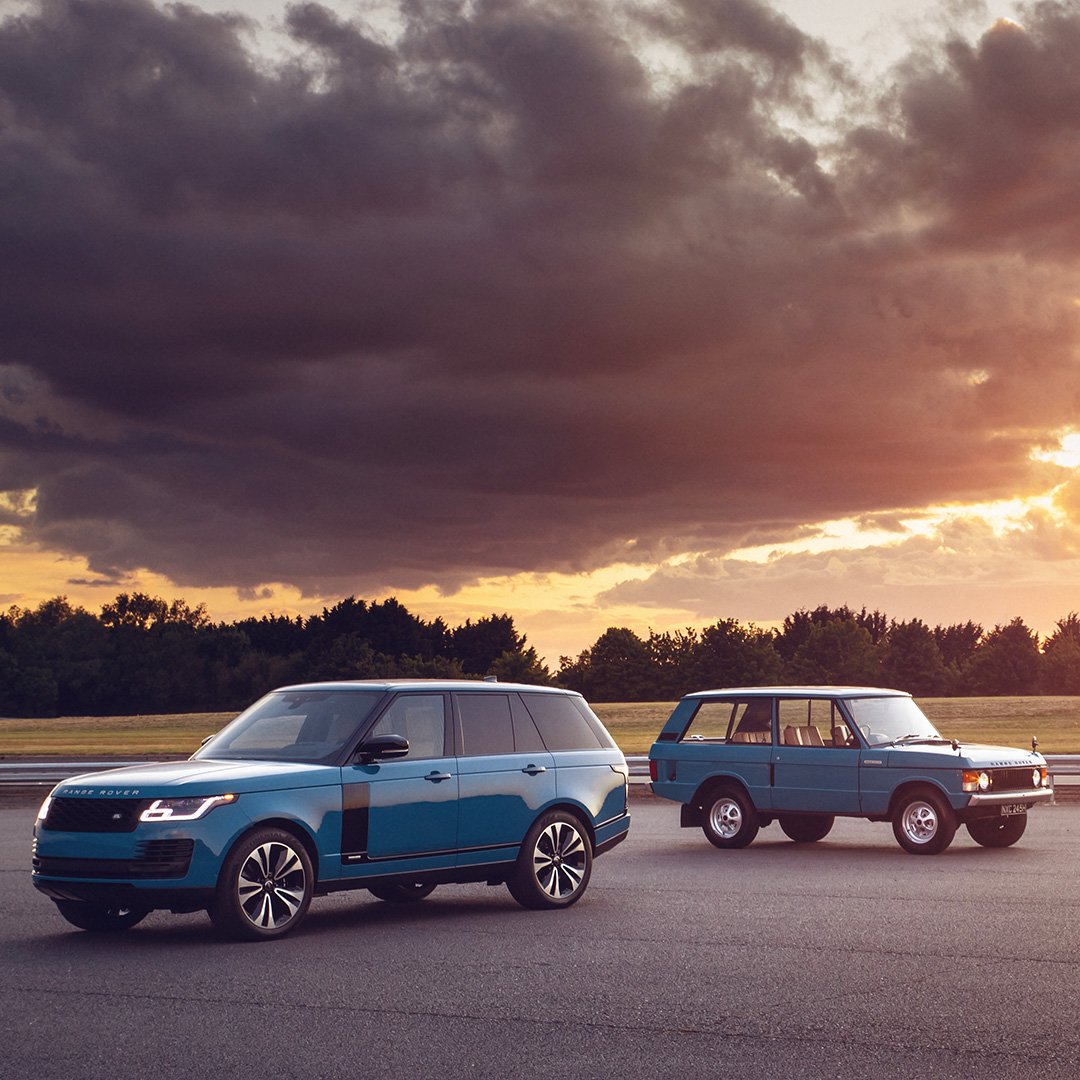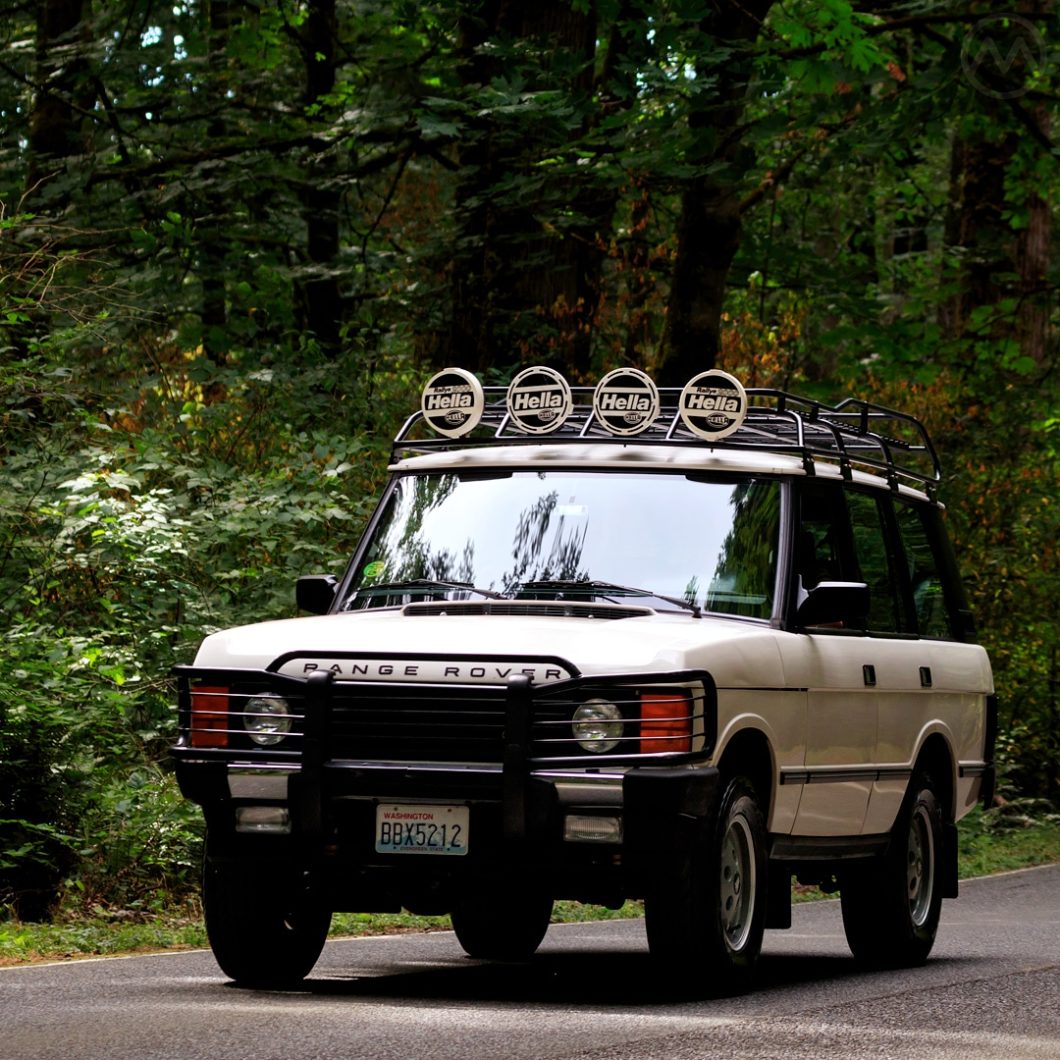Even Bentley and Rolls-Royce make SUVs today, as unusual as that idea might once have seemed, and 2021’s roads are chock-a-block with luxe utilities. That might not have happened if not for two pioneering trucks, the first being the Jeep Super Wagoneer and the second being the Range Rover.
Now commonly referred to as the Range Rover Classic, this latter truck was arguably the first SUV designed from the start with the same luxury sensibilities as Rover’s cars, though early Ranges seem spartan to modern eyes. The Jeep came first, yes, but the idea of a luxurious, comfortable SUV had been percolating for a long time on both sides of the Atlantic.
Civilized Utilities
The Range Rover story arguably starts way back in 1949.
Having introduced the simple and rugged original Land Rover a year earlier, the brothers who ran Rover, Maurice (chief engineer) and Spencer Wilks (managing director), were looking for ways to get even more mileage out of that very successful product. Land Rovers were agricultural, and meant for farm and trail work. If the same bones could be made more civilized, that would boost sales and fill even more of Rover’s Solihull factory with activity.
To test out the idea of a more civilized Land Rover, the Wilks Brothers partnered with Tickford to create the coachbuilt “Land Rover 80-inch Station Wagon.” It had an aluminum-over-wood body with more creature comforts, but it also cost far more than a regular Land Rover wagon, and in 1949-50, nobody had ever conceived of a “luxury” truck.
It flopped, and less than 700 were made before the Brothers pulled the plug in 1951. But the idea of a more comfortable and consumer-focused Land Rover was sound, it just had to be done in a more effective way, and people weren’t ready for it yet. The “Road Rover” idea resurfaced several times in the 1950s but never made it to production.
That same year, engineer Gordon Bashford, who went to work at Rover as an apprentice in 1930 and had risen through the ranks ever since, tried another idea. Instead of a Land Rover-based Wagon, what about a Rover P4-based Utility? The 1951 “Road Rover” prototype was primarily meant for on-road use, as it was meant to be a big utility wagon rather than either a car or an off-roader, and it would be rear-drive only.
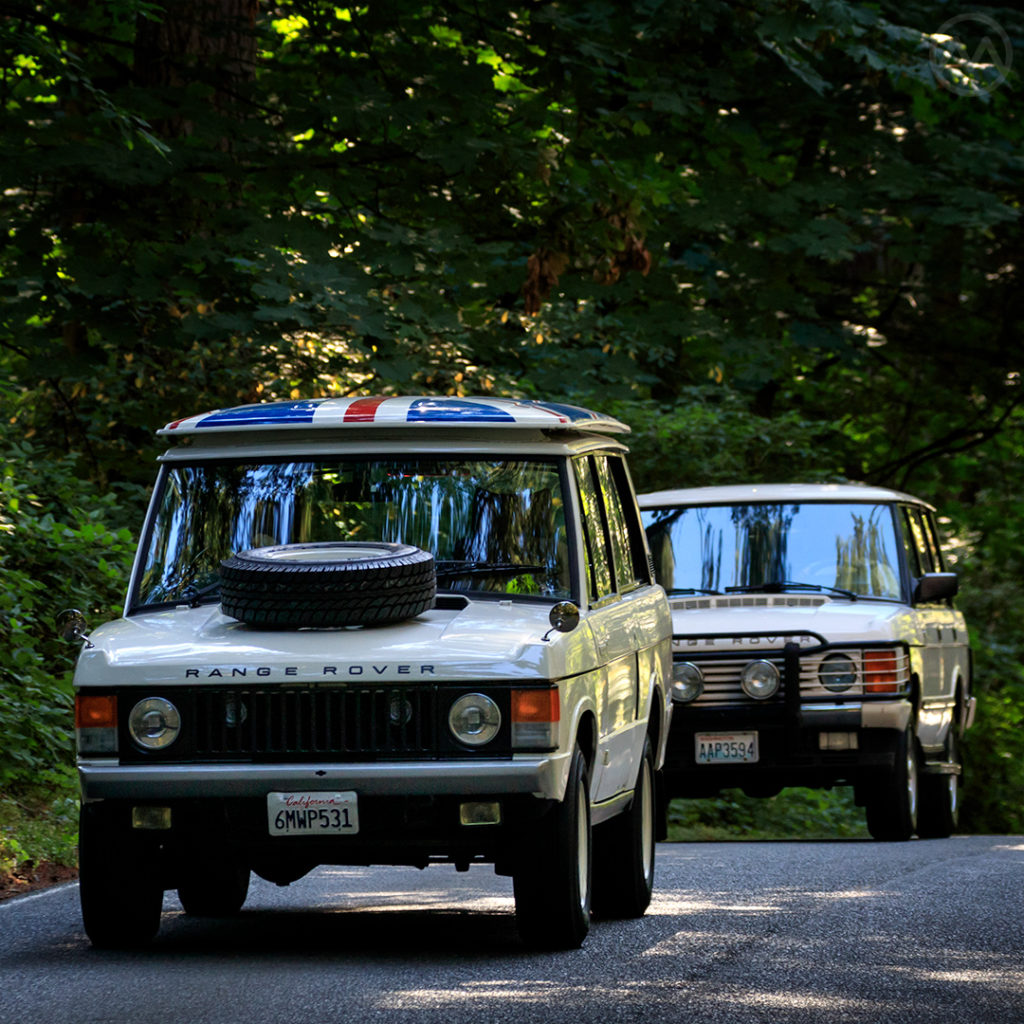
The Road Rover project was a secondary one, and Bashford’s responsibilities to the entire line of Rover products meant it got perpetually pushed to the back burner. Development dragged on for seven years while design work was devoted to the P4, P5, and turbine projects.
In 1959, Rover considered building this 90-inch wheelbase wagon, but Land Rovers were selling fine and so war Rover cars, and given the experience with the 80-inch wagon, it seemed like a risky investment. Needless to say, it never made it to production.
These same ideas were at play in the United States, where surplus Jeeps helped kick off a small but growing market for fun off-road vehicles. Willys, later Kaiser-Jeep, effectively cornered this market in the 1950s, having launched the four-wheel drive “Utility Wagon” in 1949. While less basic than the CJ-series Jeeps, the Wagon was not really a “luxury” machine and four-wheel drive versions drove very much like trucks.
In the late 1950s, both Kaiser-Jeep and International Harvester Corporation (IHC) understood by 1959 that there were some off-road vehicle buyers who wanted a vehicle as capable as a Utility Wagon or a CJ, but with the creature comforts of a proper car.
International got there first, in November of 1960, with the Ted Ornas-designed Scout. Though primitive by today’s standards, the Scout was an excellent blend of car-like comfort and off-road brawn, and Jeep followed in 1963 with the SJ-series Wagoneer, which took comfort levels far further. Ford followed with a Scout-inspired design of its own, the Mk1 Bronco, in 1965.
Range Rover Development Begins
With the success of the Scout and the Jeep SJ, Bashford and engineer Charles Spencer “Spen” King revisited the Road Rover concept with an eye towards export volume. Part of the reason that the late 1950s iteration of the Road Rover (which had gone through many style changes since 1951) was not built is that sales expectations were not particularly good. But if Americans wanted to buy these vehicles in quantity, that was an opportunity to make the economies of scale work better.
Rover was keen to crack the American market, and indeed one reason why it had developed the Rover P5B Coupe was Americans’ love of hardtops, but nothing it tried on the car side seemed to work. If Toyota could make inroads with the FJ40 Land Cruiser, which it was already doing in the early 1960s, and possibly stealing Land Rover sales in the process, Rover could too.
Neither the 80-inch wagon nor the Road Rover were the exact template for what worked in the USA, as the Jeep, IHC, and Ford trucks were all four-wheel drivers, but they were much more civilized than an adapted Series 1 Land Rover.
By this time Spencer Wilks had retired and Maurice had passed away, with his nephew Peter Wilks had become technical director. Spencer and Maurice’s brother-in-law William Martin-Hurst became executive director of production in 1960 and managing director in 1963. In the pre-British Leyland era, Rover was still rooted in being a family business.
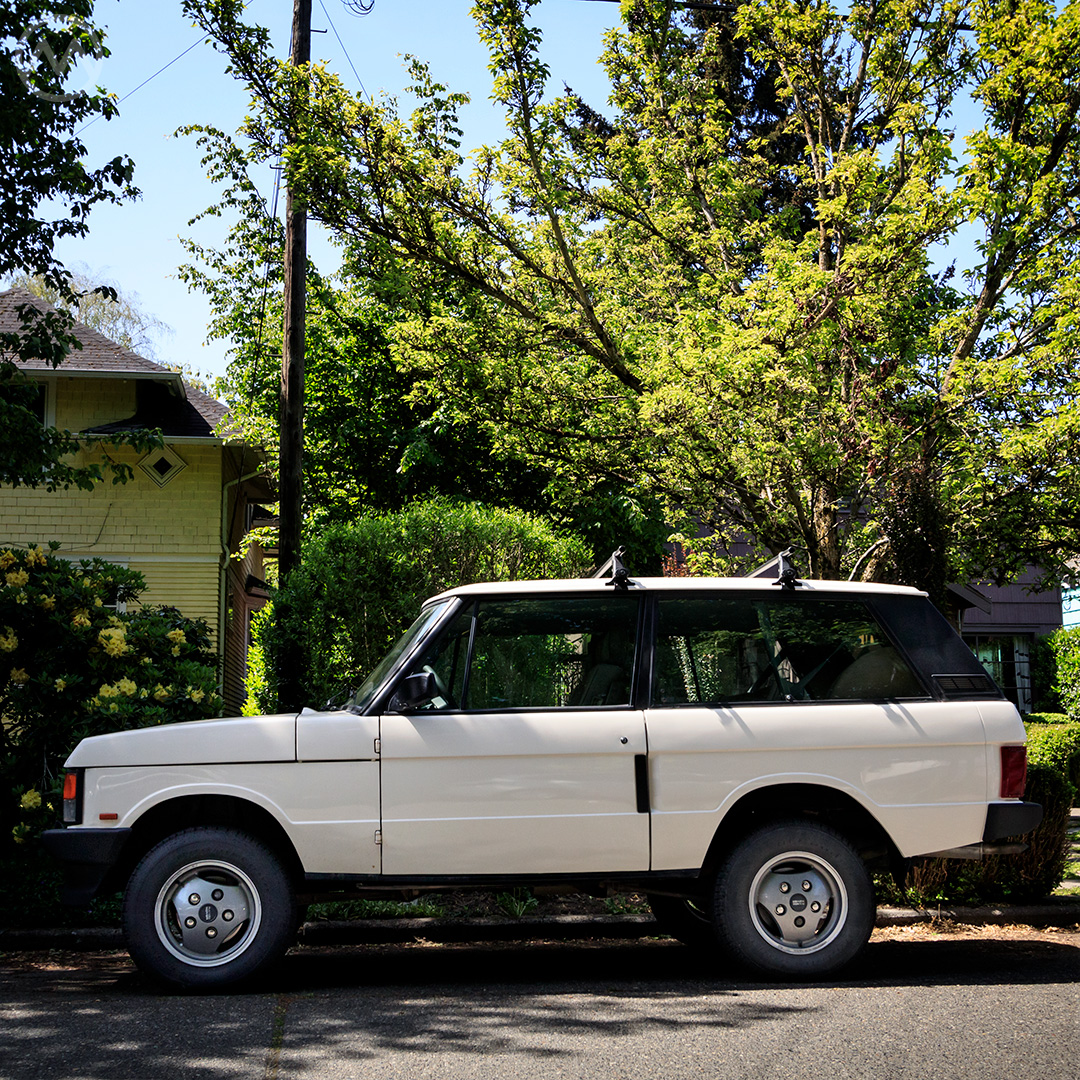
Hearing what Bashford and King had in mind, Peter Wilks greenlit development of the “100 inch station wagon” in 1965.
At the heart of this new vehicle would be the Rover V8, newly purchased from General Motors by Martin-Hurst in early 1965 and reworked for Rover’s use. The basic design of the new vehicle was simple. It would have full-time four wheel drive permanently engaged, a box section chassis and a steel skeleton body with light outer panels, and ride a 100-inch (254cm) wheelbase. (Technically, it was 99.9, but they called the prototype the “100 inch wagon”).
The man in charge of styling this new machine was Rover’s original design man, David Bache. He had styled the P4 and would go on to style the P6 and SD1, do the production design on the Range Rover classic, and later oversaw design on several other well-known British Leyland products (including the Metro and Maestro).
If Bache’s work on the P4 and P5 had been traditional, his P6 was radical, and the SD1 that would come later even more far out. In the late 1960s he was cooking up minimalist forms that looked like glass skyscrapers compared to the old ornate stone buildings of yore. His proposal for the 100-incher was smooth and clean, and eschewed boxyiness for curves. It looked like something Pio Manzù would come up with, and some of his early sketches resemble a gigantic Fiat 127.
Velar
That’s not how things turned out, however.
By January of 1967, Bashford and King had created a full-size prototype, and it itself was a model of minimalism, if boxy compared to Bache’s ideas. Though the pair had received help from Bache’s styling minions, it was an industrial look, but a clean one.
By then, Rover had been bought by Leyland Motor Corporation, which brought in a new boss, Donald Stokes. Stokes and the Leyland group loved the prototype, and ordered Bache’s team to tidy it up for production rather than use the designs Bache had been working on. Much of the 1967 prototype remained in the production vehicle. The styling team essentially only changed the styling ahead of the a-pillar and some rear end detail work.
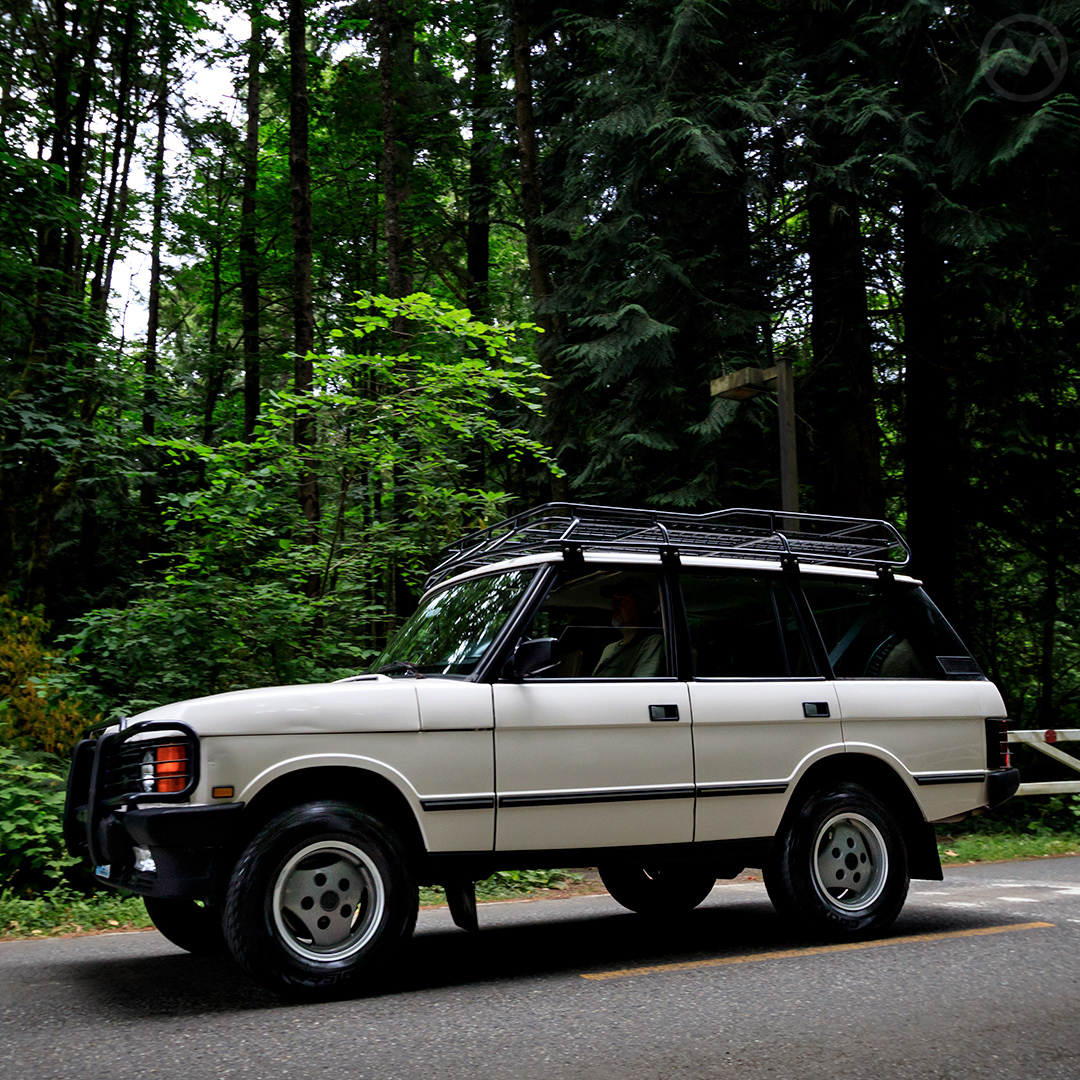
The inside of the vehicle was spartan compared to a Rover car, but plush compared with a Land Rover. In the late 1960s simpler forms were dominant and the 100-inch wagon got a plastic dashboard and simple but comfortable interior with a minimum of bare metal details as so common on SUVs of the time.
In 1966, Jeep had launched a version of the SJ-series truck called the Super Wagoneer, the first luxury SUV. It had many creature comforts that were new to SUVs, and a posh interior. It wasn’t a big seller, but it was influential. The 100-inch wagon would have some of these details, though how much Rover’s engineers paid attention to this low-production Jeep is debatable. Compared to historical utilities, it was pretty plush, more like a station wagon than a truck, and that was the point.
By 1968 pre-production prototypes were in testing, and they worked extremely well. The real-world testing prototypes wore the label “Velar,” to fool the press. In the background of these happy developments, Leyland-Rover became part of British Leyland, which pulled the historically small world of Rover into the gigantic combine with its former rival Standard-Triumph and lots of other companies.
Range Rover
Although Rover knew they had a hit on their hands from the start, testing took longer than anticipated and the new truck did not debut until June of 1970. The Velar name was gone, replaced by “Range Rover.”
It was an immediate hit in the U.K., and there were instantly long lines to get one. It cost £1,998 in 1971, and there was nothing else like it at home, where American imports were expensive. It also did well in Western Europe, where there were similarly few direct competitors.
But it did not come stateside. Had Rover had more of a robust sales network or had cost less to maintain its presence in the USA, the Range Rover might have debuted here in 1972-73, but with Rover selling as many as it could build at home, the American market seemed less of a priority than it had during the planning phase. Also, British Leyland’s priorities for America didn’t include Rover, and the P6 was withdrawn from the USA in 1971.
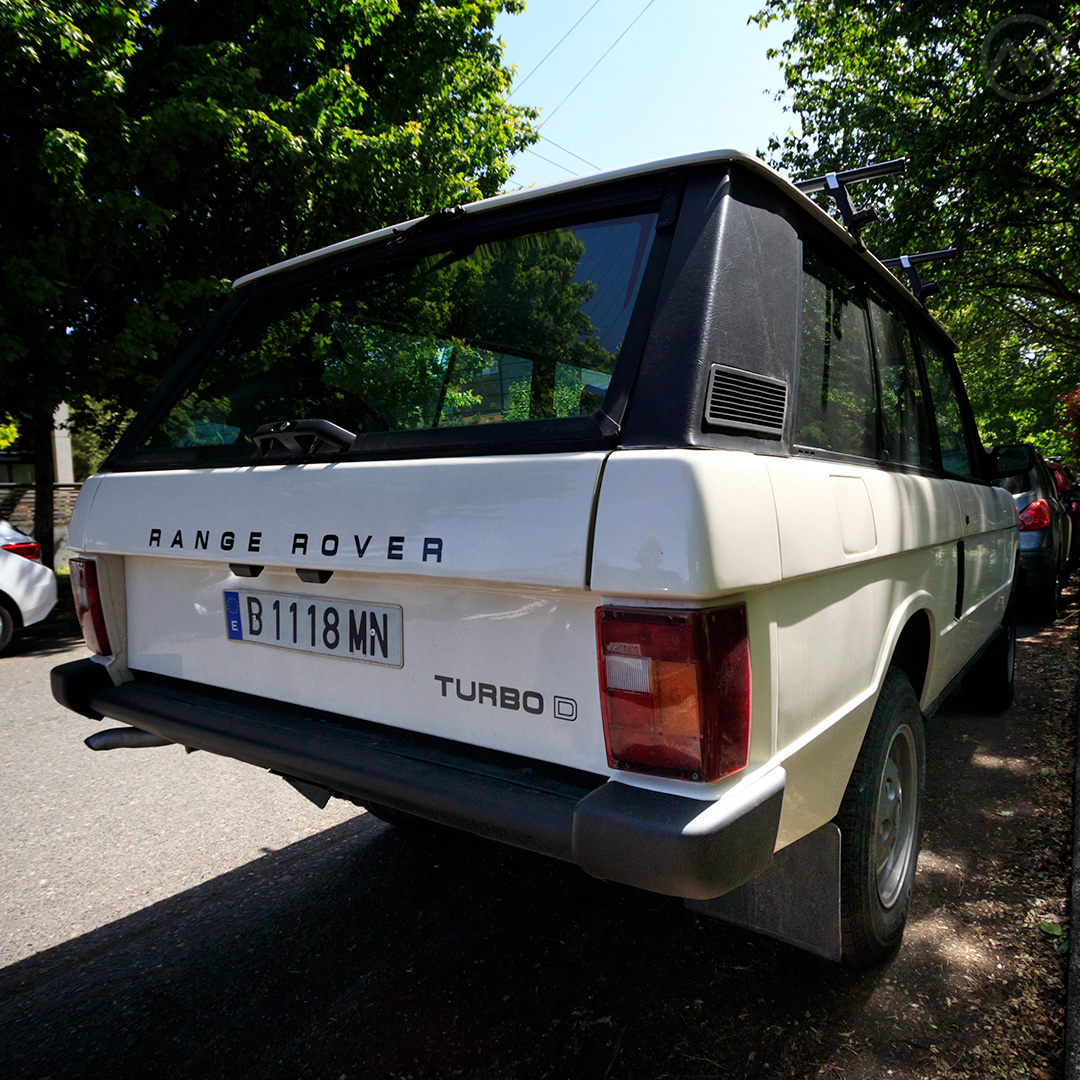
Land Rovers were still offered, in ever dwindling numbers, until 1974, but were then withdrawn rather than trying to keep pace with changing regulations. So the original Range Rover, developed and sold only as a two-door model, was never marketed in North America.
Because it was selling well and profitable, the troubled British Leyland combine also diverted development money away from the Range Rover after launch. A four-door version was designed in 1972, but Rover was not given any funds to productionize it. The Range Rover was launched as a V8, manual-transmission-only two-door, and in 1978 that was still all you could get.
Luxury Truck Evolution
The 1970s were a hard time for Land Rover just as they were for the rest of British Leyland. Because it was viewed essentially as a sideline business, it was more or less ignored for much of the decade, with no real attempt to build on the Range Rover’s success. Notably, the 1975 Ryder Report, aimed at creating a consolidation and profitability plan for British Leyland, did not directly address what to do with Land Rover.
It wasn’t until 1978, when Land Rover was spun off into its own corporate entity (Land Rover Ltd.) that there was a proper direction for the future, and even then it took a while for the new boss, Mike Hodgkinson, just 34, to get the company properly set up as a new unit. Land Rover soon set about creating more variations of the Range Rover, starting with the previously mooted four-door, and creating diesel-powered Range Rovers which could address the challenge posted by two successive fuel crises.
The four-door Range Rover was such a compelling idea that coachbuilders were already making them in the late 1970s, and Hodgkinson made it a priority to get in on that action. The nicest was the Swiss Monteverdi conversion, made by Peter Monteverdi’s firm famous for its Gran Turismos but which also dabbled in rebodied International Scout IIs and Plymouth Volarés. Hodkinson approved an FLM-Panelcraft version of a four-door for market testing, but the Monteverdi setup looked much nicer.
The top priority of the new company, the production four-door was launched in 1981. At the same time, the truck was given a serious upgrade to its interior materials.
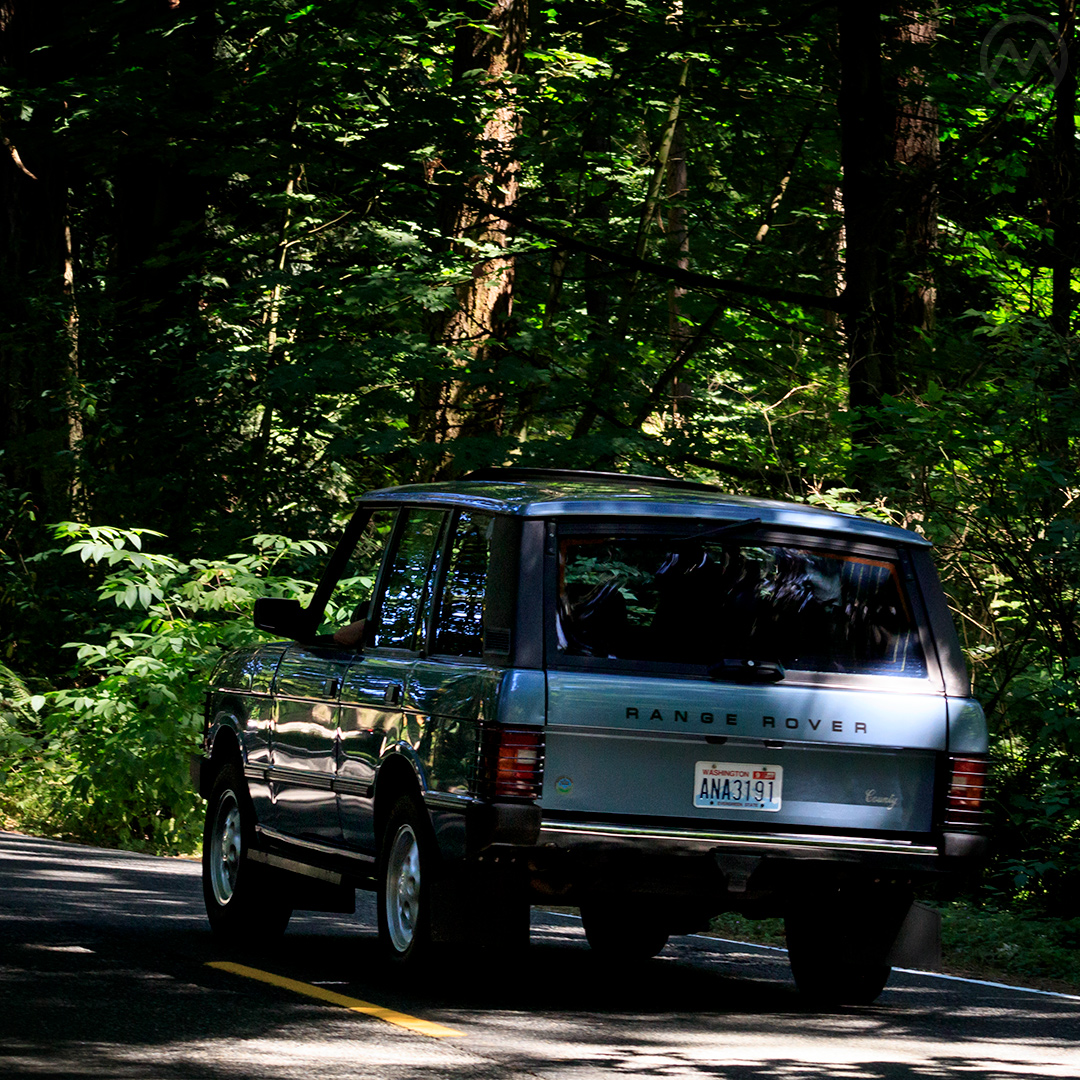
Throughout the 1980s there were running improvements, each of which spurred sales. An automatic, at first sourced from Chrysler, was finally added. Land Rover and Perkins worked on a diesel engine but when that did not work out, a VM Motori diesel was sourced, first a 2.4 liter unit and later a 2.5. These engines were weak compared to the V8, but they were hugely helpful in selling Range Rovers in countries where a 2.4 liter turbodiesel cost much less to run in both fuel and tax expenses. The VM-powered models were called “Turbo D.”
The upgraded interior of the early eighties Ranges was previewed by a special edition, the Range Rover In Vogue, hurriedly put together with help from an aftermarket company and then used for British Vogue magazine fashion shoots in Biarritz. This limited edition proved instantly popular with a group of buyers who would never have been interested in a “utility” vehicle. The Range Rover was born in the era of Led Zeppelin, but found a new audience in the Duran Duran era.
Similarly, just because Range Rovers weren’t officially offered for sale in North America didn’t mean Americans didn’t want them. The In Vogue and American interest hinted at the high-profit future of the Range Rover. From the mid-eighties onward, the Range Rover was a dedicated luxury item, and Land Rover’s development teams were focused on a more entry-level SUV, which became the Discovery, as well as a planned 1990s replacement.
Range Rover in the U.S.A.
Familiar in Britain and Europe, the Range was exotic in America, and the first gray market ones began appearing in California in 1979. By 1983 there were at least four importers in California (and some in Texas and Florida) bringing in tiny numbers of Range Rovers, making them emissions compliant, and selling them for a huge markup.
To supplement its own cars, Aston-Martin of North America got into the act in 1984. The SUV market was also exploding with new entries – primarily from Japan, but in almost every category from tiny Suzuki Samurais to family-oriented XJ-series Jeep Cherokees to big Chevy Suburbans.
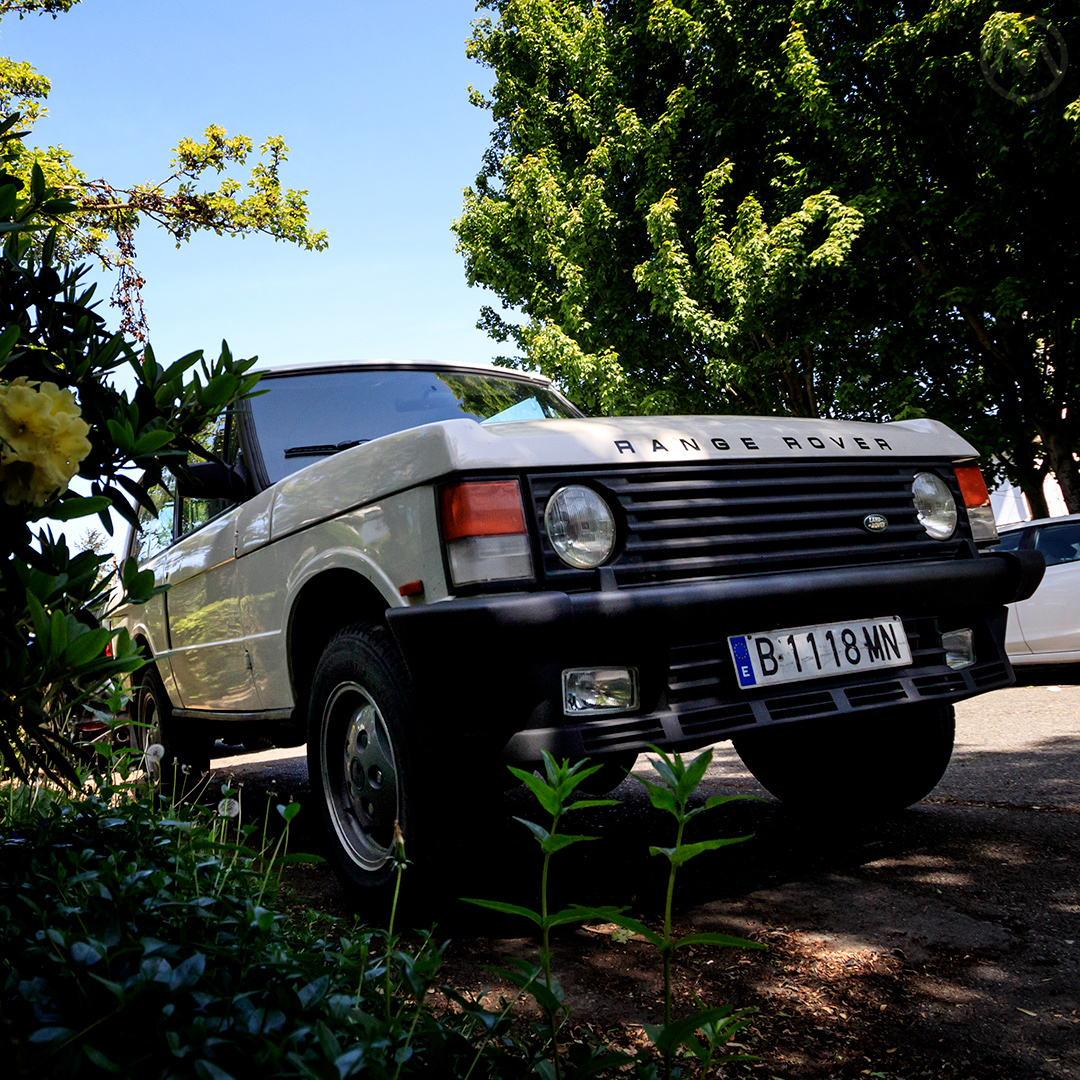
Seeing the interest and the opportunity, Land Rover decided to start bringing over the truck itself. In 1985 it formed Range Rover North America, and the truck debuted at the LA Auto show in January, 1987. Sales started on March 16, 1987. By then, British Leyland had been re-privatized to become Rover Group, and Land Rover itself had been largely insulated from the troubles of the larger concern after its spin-off.
The Range Rovers that were now to be (finally) sold in America would be the top-spec machines, and despite the cost of forming a new distribution organization and a new dealer network, they were going to be very profitable.
Just 36 initial dealers moved 1,762 of the ‘87s (2,586 were sold for the calendar year, including ’88 models), and they were all high-profile.
Bruce Willis, Goldie Hawn, Jack Nicholson, and Joe Montana were early owners and Range Rovers became a white hot accessory around Hollywood. The truck even got a shout-out on the Beastie Boys’ album Paul’s Boutique, recorded just a few months after it went on sale.
It sold well despite a high price, and “Range Rover” was soon a household name in the U.S., where it was the only Land Rover product available until 1991. They were hardly common, but they were definitely an aspirational vehicle that helped sell more Land Rovers once other models finally did arrive. The success of the old truck set the stage for a return of the Defender (1991) and introduction of the more mainstream Discovery (1994).
It was also part of a small group of ultra-luxe utilities of the era, alongside the old SJ-series Jeep Grand Wagoneer. Many companies were envious of these high-profit machines. In the early 1990s, Cadillac manager John Grettenberger proposed a Cadillac alternative to the Range Rover, but was told by middle management that buyers wouldn’t be interested. Later that decade, the idea was revisited and became the Cadillac Escalade. By the 2000s, virtually every company was jumping into the SUV market.
By the end of the Thatcher era, the Range Rover had become practically palatial compared to its spartan early years. Power, as always, came primarily from the Rover V8, gradually enlarged to 3.9 and later 4.2 liters, with the Diesel engines giving way to Land Rover’s home-grown units in 1992. Four-door models quickly outpaced the two-door in sales in the mid-1980s, though the two-door was still a decent seller in France and Spain into the nineties.
By then, the old machine was living on borrowed time as Land Rover worked on the P38A project, which would be introduced as the next-generation Range Rover in the fall of 1994. Production of the old truck continued into 1996.
